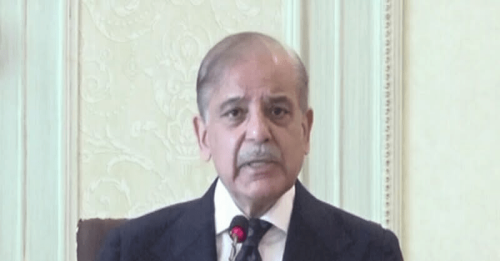THE Malir Expressway in Karachi is being built on the western bank of the Malir river. There is no doubt in my mind that the expressway will be completed and unless a major people’s movement is launched, housing estates will mushroom on its banks, eating away what little is left of Karachi’s green cover.
But before we discuss the future of this green cover, we should understand the nature of the Malir river system. The river rises in the foothills of the Kirthar range, travels partly through District East of the city and enters the sea at the Gizri Creek in District South. The river and its nine tributaries, except for the Mol, are seasonal and carry water only for a few days in a year. Therefore, comparing Malir with the Thames or the Seine, as some have done, is unrealistic. However, some parts of the river do carry sewage to cesspools within its bed. In District South, the delta receives a large volume of sewage through the Mehmoodabad nullah from 34 Karachi settlements, including Defence Housing Authority phases four and seven. The delta, and the nullahs entering it, have been encroached upon as a result of which massive flooding takes place, not only in the 34 settlements but also in DHA itself.
The Malir Expressway could threaten some ancient sites.
Settlements along the Malir river that are to be evicted as a result of the expressway have been the subject of considerable discussion, both in the media and at the EIA (Environmental Impact Assessment) hearing that took place. However, on the banks of the river in District East, there are also a large number of Paleolithic, Neolithic, and Indus Valley sites that have been documented by archaeologists. They are already under threat and with the building of the Expressway, it is feared that they will disappear forever. A much larger number of sites also exist along the Mol river. Not only should Karachi’s old goths and their communities be protected but the ancient history of the Karachi region should also be safeguarded.
There are a number of issues that will emerge once the expressway becomes operational. For one, there will be major environmental pollution from the noise and fumes of vehicles. Next, a major part of District East consists of agricultural land. In all the five master planning exercises for the city, the land use of this area has been defined as a “green area”. As a result of permission for the building of real estate along the corridor, this lung of the city will be wiped out forever.
To tackle this dual threat, it is essential that heavy forestation should be carried out in the floodplains of the Malir river and along the western side of the expressway. In addition, the existing agricultural land and activity should not only be protected as a green area for the city but should also be promoted through R&D exercises. A blueprint for this was prepared by the renowned Pakistani social scientist Akhtar Hameed Khan and can be used for this purpose. In addition, small check dams should be built in the river to recharge its aquifer which has been depleted due to the removal of an estimated 1.4 trillion cubic metres of sand and gravel from the riverbed for the construction of Karachi.
The same issues resurfaced for the EIA for the Malir Expressway as for all other previous EIAs. A government agency selected a consultant for the preparation of the EIA and approved his report for presentation before the citizens. The consultant defended his report and it was subsequently accepted by the agency. The EIA was prepared and a public hearing was held after the project had been designed and its implementation had begun. So what is the use of such an EIA?
If the Environmental Protection Agency and the government of Sindh are serious about holding a transparent and objective EIA hearing, then a reform in the process is necessary. The EIA process should be instituted immediately after the conceptual design of the project. The consultant for the EIA should be chosen by a committee consisting of a neutral expert on the subject, a representative (maybe two) of the local stakeholders in the region where the project is to be implemented, a lawyer from the community’s side, and a government representative. The report that is to be placed before the public should be approved by the committee and if there are differing opinions on it between committee members, these should be presented to the public. This report should then be presented to the public during the hearing and an attempt at arriving at a consensus on it should be made.
In the absence of such, or a similar system, EIAs are nothing more than a waste of money, time, and intelligence and a ‘legalisation’ process for the ruination of our physical and social environment.
The writer is an architect.
Published in Dawn, March 27th, 2022











































